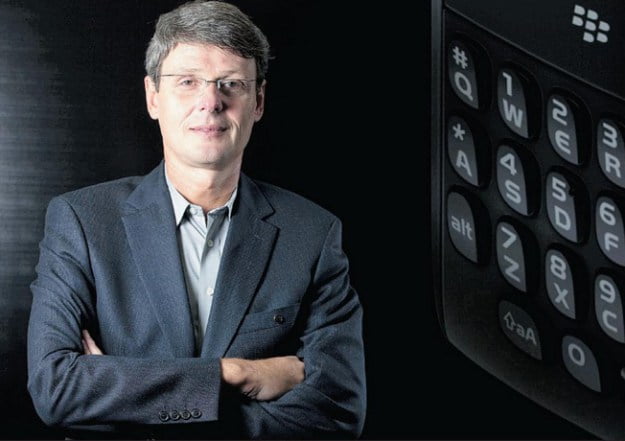
Given the utterly dire state in which he left BlackBerry, I was curious to see if former CEO Thorsten Heins would have better luck in his post-BlackBerry business endeavors. As it turns out, he has not. Re/code notices that Heins is apparently being ousted from his current position as the CEO of wireless charging company Powermat as part of a settlement with some members of its board of directors.
In case you haven’t been paying attention (and I don’t blame you if you haven’t), Heins last year was sued by three Powermat board members for allegedly “operating without an approved budget and steering the business into insolvency.” The suit alleged that Heins and three other executives have created a “serious trust crisis” by running the company without an approved budget, although Heins and Powermat are vehemently denying all these accusations.
At any rate, the settlement between Powermat and the board members mandates that Heins leave the company along with several other board members. While I’m sure Heins will find a new gig doing something in the wireless industry, it’s hard to imagine another company tapping him as its chief executive anytime soon given that his last two stints as CEO didn’t exactly win him a lot of plaudits.
UPDATE: Powermat checks in to say that Heins is still the company’s CEO and he will be for the foreseeable future. It also lambasted former CEO Ran Poliakine for making misleading statements about the status of Heins at Powermat:
Powermat Technologies Ltd. today responded to a court filing and to various statements made to the press by Powermat’s former CEO and Chairman, Ran Poliakine. The Company said it is highly unfortunate that Mr. Poliakine and those working with him chose to release a copy of a term sheet that was being discussed in the context of a confidential mediation without consent of the parties or the mediator.
The disclosure of such mediation materials by Mr. Poliakine is in clear violation of legal standards and the good faith parties expect during mediation. In addition, various press reports misrepresent the mediation materials and suggest there is a binding agreement, which is not the case. In fact, the document was rendered “null and void” because all parties did not sign it.
[Source:- BER]




